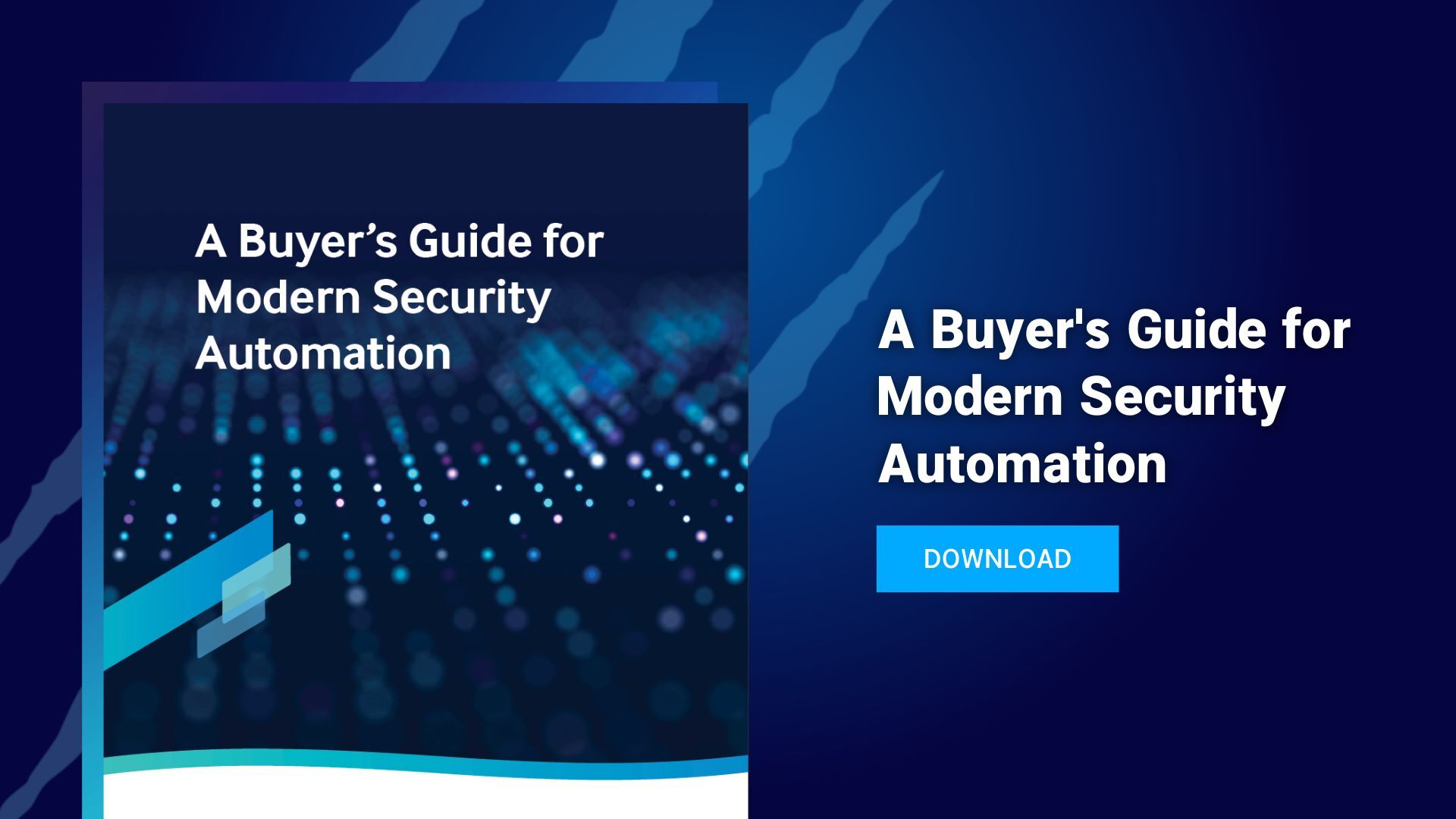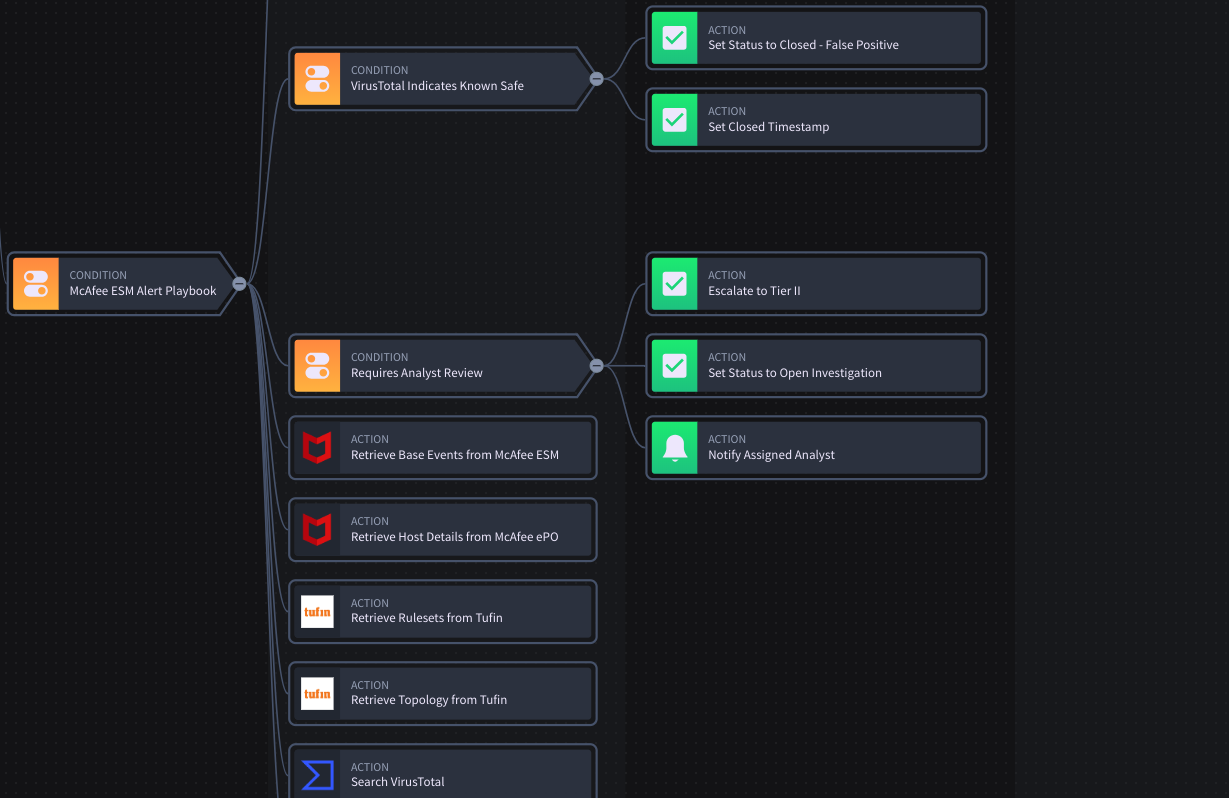Low-code software development is a well-established process that delivers applications faster than traditional approaches, thanks to its emphasis on minimal hand-coding. Instead of relying on complex programming languages which require advanced security skills, users employ graphical interfaces complete with drag-and-drop features to easily build integrations, automated workflows, playbooks and services.
The ease of use enabled by low-code solutions accelerates development speed and time-to-value. This translates into benefits for analysts like reducing repetitive tasks in favor of more strategic work. It benefits security leaders by maximizing their teams productivity, reduces costs, and mitigating analyst burnout. For the organization as a whole, the benefit looks like securing vital digital transformation efforts to enable growth and innovation. The point is, no matter who you are or the organization you belong to, low-code is increasingly essential for a diverse range of use cases. It’s a rapidly growing niche that will soon be the norm for technology offerings.
Swimlane’s Approach to Low-Code Automation
Swimlane is a strong advocate for a low-code approach to application development and is the pioneer of low-code security automation. This innovation unlocks the potential for automation to grow beyond the security operations center (SOC). It will do this by delivering a platform that can serve as a system of record for the entire security organization. This translates into helping security teams overcome process and data fatigue.
Gartner has recently released a set of ‘Low-Code Application Critical Capabilities Criteria’ as a companion to the familiar Magic Quadrant format. This methodology extends Gartner’s analysis into products and services. In particular, their Low-Code Criteria is a comprehensive matrix detailing everything from the application user experience to the platform ecosystem, architecture, quality of service, governance and, of course, security (among others).
This offers useful guidance for organizations evaluating and comparing low-code solutions. Swimlane’s approach to low-code security automation offers many similarities to the critical capabilities that Gartner has defined. Let’s dive in to a quick analysis:
Application Development
Swimlane provides a robust application development capability for use cases ranging from simple business logic requiring only drag-and-drop data entry to extremely complex, sophisticated use cases required by an enterprise developer.
Data Model and Management
We also support a rich set of graphical elements in the form of dashboard boards with a vast array of charting options and data visualization in the case management and composable applications.
Process & Business Logic
Our approach to low-code also ensures Swimlane is both vertically and horizontally scalable to allow for enterprise data volumes and nearly limitless capacity for application data. Automation plays an important role and we provide extensive automation coupled to case management capabilities across a variety of security and non-security use cases.
Introducing Swimlane Cloud
The First Cloud-Scale, Low-Code Platform For Security Automation
Swimlane Cloud is the industry’s most capable security automation platform. It enables security teams to harness the collective knowledge of their entire security organization to create a network effect of sophisticated security automation use cases. The power of low-code automation delivers a centralized system of record for operational data.
Our low-code features have been designed to help security teams do what otherwise might seem impossible. If you’re a skeptic and still wondering how this all actually works, here are three features that power Swimlane’s low-code platform for security automation that you need to know about.
-
Adaptable User Interface
- From case management, to SOC dashboards and reporting, every inch of Swimlane’s user interface is adaptable so that it can serve a wide variety of security needs. This includes visual modules for use case development to harness institutional knowledge across the organization, which in the process makes everyone an automator.
-
Technology-Agnostic
- In addition, ultra-fast integration with any security or IT tool is provided by a rapid integration framework that enables an out-of-the-box integration experience. With no closed ecosystem or vendor lock-in, Swimlane Cloud is also workflow and technology agnostic, enabling users to focus on any use case with no technology limitations.
-
Cloud-Scale
- Not only does cloud-scale speak to the enterprise scale that the platform supports, but also the availability of flexible deployment options – including SaaS, cloud, on-premises, air-gapped, or hybrid, it can be rolled out anywhere.
Looking Ahead
Swimlane Cloud will help meet growing demand for low-code solutions. According to analysis from Gartner, the worldwide low-code development technologies market is expected to reach $13.8 billion in value during 2021, up by 22.6% from last year. Gartner says that, “the surge in remote development during the COVID-19 pandemic” will continue to boost its adoption.
As the need to deliver more agile and holistic security strategies becomes more important, organizations that look to combine the benefits of low-code with automation will be ideally placed to maximize their levels of protection. To read more about Swimlane Cloud, click here.

A Buyer’s Guide for Modern Security Automation
Cut through the complexity and frustration of SOAR and security automation platforms. Learn everything you need to know about selecting an automation solution, so you can select the best one for your team.


